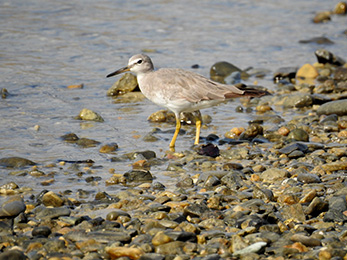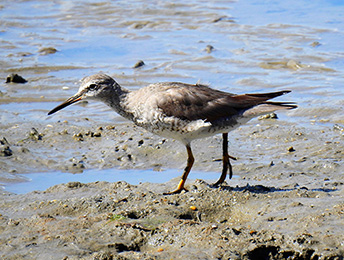TATTLERS
Globally, there are two primary species of tattlers: the Wandering Tattler and the Grey-tailed Tattler. These species are similar in appearance and behavior but inhabit different geographical regions, which influences their migratory patterns and breeding behaviors.
They are medium-sized wading birds, typically characterized by their slender bodies, relatively short legs, and long, straight bills. Their plumage is generally muted, featuring blends of grey, brown, and white, which provide excellent camouflage against the rocky riverbanks and coastal areas where they are often found. This natural disguise plays a crucial role in their survival, helping them blend into their environment to evade predators.
One of the most notable features of Tattlers is their vocal behavior. They are named for their loud, piercing calls, which sound like sharp, repetitive tattling noises. These calls are not just a means of communication but also a tactic for startling insects and other small creatures out of hiding, making them easier to catch. The Tattler’s diet mainly consists of insects, crustaceans, and small invertebrates, which they skillfully pluck from mud or sand.
Tattlers are also known for their migratory patterns. They are typically found in the Asia-Pacific region, but they migrate significant distances for breeding. During migration, they can often be seen along coastlines and estuaries, stopping to refuel and rest. This behavior makes them a common subject for bird watchers and researchers who are interested in migration patterns and the challenges these birds face along their routes, including habitat loss and climate change.
In their breeding season, Tattlers adopt a more secretive demeanor. They nest on the ground, often in high-altitude areas or isolated islands, laying two to four eggs. The nests are usually simple scrapes in the ground, lined with leaves and small twigs, demonstrating their minimalistic approach to nesting.
Tattlers are not just interesting from a behavioral or ecological perspective; they also play an important role in the ecosystems where they reside. By feeding on insects and other small invertebrates, they help control the population of these creatures, which can impact various ecological parameters, including plant pollination and soil health.


